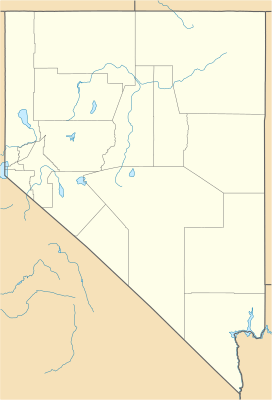Three Lakes Valley (Nevada) facts for kids
Quick facts for kids Three Lakes Valley |
|
|---|---|

|
|
| Length | 25 mi (40 km) |
| Width | 8 mi (13 km) |
| Geography | |
| Location | Indian Springs, Nevada |
| Borders on | Pintwater Range-W East Desert Range-NE Desert Range-SE Las Vegas Valley-S & SW Spring Mountains-S & SW |
The Three Lakes Valley is a long, flat area of land in Nevada, USA. It stretches for about 25 miles (40 km). This valley is special because it is partly endorheic. This means that some of the water that falls here does not flow out to the ocean. Instead, it stays within the valley or sinks into the ground.
You can find the valley in the southwest part of Lincoln County and the northwest part of Clark County. Towards its southwest end, the valley narrows. Here, small streams called washes carry water south. This water eventually joins the larger water system of the Las Vegas Valley. This system then flows into Lake Mead and the Colorado River.
Exploring Three Lakes Valley
Three Lakes Valley is shaped mostly from north to south. It is not very long, only about 25 miles (40 km). The valley opens up towards the southwest. This opening is between the lower parts of the mountains around it.
Mountains Around the Valley
Several mountain ranges surround the Three Lakes Valley. On its western side, you will find the Pintwater Range. These mountains form a curve and also run from north to south.
To the east, the valley is bordered by the East Desert Range. This range is mostly in the east and northeast. In the far southeast, you will see the northern parts of the Desert Range. From here, washes flow west into the Las Vegas Valley.
The Dog Bone Lakebed
A large part of the valley, about half of it, is taken up by the dry lakebed of Dog Bone Lake. This lakebed is usually dry, but it can fill with water after heavy rains.
Smaller washes run along the eastern and western edges of the valley. A longer set of washes stretches northwest. These washes lead into a narrower area where the northern Pintwater Range and the northwest East Desert Range meet. This is where many of the valley's water sources begin.


